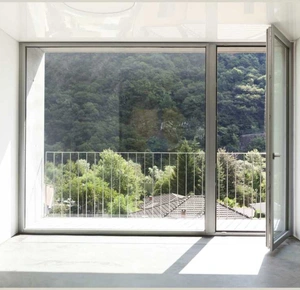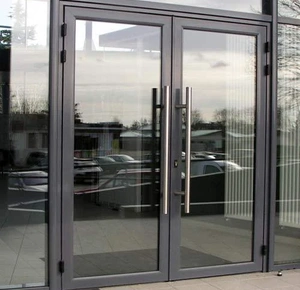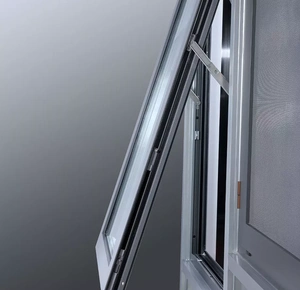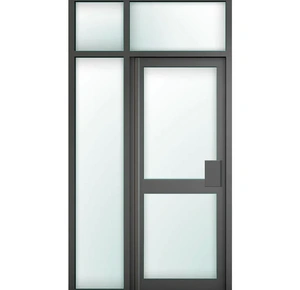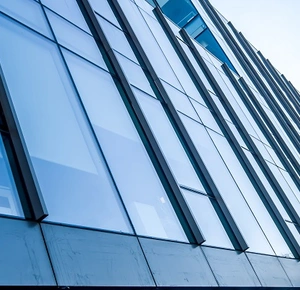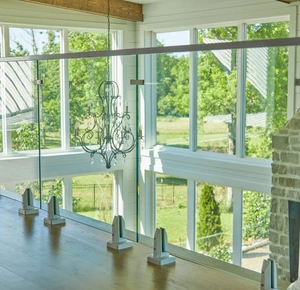Laminated Glass and Tempered Glass: A Comprehensive Comparison
When it comes to choosing glass for windows, doors, and other architectural applications, safety and durability are top priorities. Among the most popular choices for safety glass are laminated glass and tempered glass. While both types of glass offer enhanced strength and safety compared to traditional glass, they have distinct characteristics, advantages, and best-use scenarios.
In this article, we’ll dive into the key differences between laminated glass and tempered glass, exploring how they are made, their properties, and where each is best suited for use. Understanding these differences will help you make an informed decision on which glass type is most suitable for your home or commercial project.
1. What is Laminated Glass?
Laminated glass consists of two or more layers of glass with an interlayer of polyvinyl butyral (PVB) or other bonding material sandwiched between them. The layers are fused together through a process of heat and pressure, creating a strong, durable material that holds together even when broken.
How Laminated Glass is Made:
- Two or more sheets of glass are placed with a PVB or resin interlayer between them.
- The assembly is heated and compressed, causing the glass layers to bond permanently to the interlayer.
- The result is a single, composite piece of glass that has enhanced strength and safety properties.
2. What is Tempered Glass?
Tempered glass, also known as toughened glass, is a single piece of glass that has been treated with a thermal tempering process to increase its strength. The glass is heated to extremely high temperatures and then rapidly cooled, creating internal stresses that make the glass much stronger than regular annealed glass.
How Tempered Glass is Made:
- The glass is heated to a temperature of around 600-700°C.
- After heating, the glass is rapidly cooled by blasting it with cold air, creating a layer of compression on the surface.
- This process increases the tensile strength of the glass, making it about four to five times stronger than untreated glass.
3. Strength and Durability
Both laminated and tempered glass are much stronger than regular glass, but they achieve this in different ways, and their durability in various situations differs as well.
Laminated Glass:
- Strength through layers: The strength of laminated glass comes from the multiple layers of glass bonded to a tough interlayer. Even if the glass breaks, the pieces remain stuck to the interlayer, preventing it from shattering into dangerous shards.
- Impact resistance: Laminated glass is highly resistant to impacts because the interlayer absorbs the force, making it difficult for objects to pass through the glass.
- Security and safety: Laminated glass is often used in security applications, such as bank windows, storefronts, and even bullet-resistant windows. The glass may crack on impact, but the interlayer keeps the window intact, preventing entry.
Tempered Glass:
- Surface tension: The strength of tempered glass comes from the internal stresses created during the tempering process. The surface of tempered glass is under compression, while the inner layers are under tension. This makes it much stronger than standard glass.
- Breakage pattern: When tempered glass breaks, it shatters into small, blunt pieces rather than large, sharp shards. This "dice-like" fragmentation reduces the risk of serious injury, making tempered glass a common choice for automotive windows, shower enclosures, and doors.
4. Safety Features
Safety is one of the primary reasons for choosing laminated or tempered glass, but each type of glass offers different safety features.
Laminated Glass:
- Shatter resistance: Laminated glass is shatter-resistant because the PVB interlayer holds the glass together even if it breaks. This means that broken glass will not fall apart or create hazardous sharp fragments, reducing the risk of injury.
- Holds its shape: Even after breaking, laminated glass maintains its shape, which is crucial in applications such as skylights or overhead windows, where glass falling could cause serious harm.
- UV protection: The PVB interlayer in laminated glass also filters out 99% of UV rays, protecting furniture, flooring, and other interior elements from fading or sun damage.
Tempered Glass:
- Shatter safety: Tempered glass is designed to shatter into small, blunt pieces when broken, making it much safer than regular glass. This breakage pattern reduces the likelihood of severe injuries, especially in high-traffic areas.
- High-impact resistance: Although tempered glass breaks more easily than laminated glass when hit by a sharp object, it is highly resistant to sudden impacts and thermal stress, making it ideal for environments where the glass may experience heavy use or exposure to fluctuating temperatures.
5. Applications of Laminated Glass vs. Tempered Glass
The choice between laminated and tempered glass depends largely on the application and the level of safety, durability, and security required.
Common Applications for Laminated Glass:
- Automotive windshields: Laminated glass is used in car windshields because of its safety features. In the event of an accident, the glass may crack, but it won’t shatter or cause injury to passengers.
- Skylights: Laminated glass is used in skylights and other overhead applications where falling glass could cause significant harm.
- Security windows: Laminated glass is used in settings that require high levels of security, such as banks, jewelry stores, and government buildings. It can be engineered to resist forced entry and even bullets.
- Soundproofing: The PVB interlayer in laminated glass helps dampen sound, making it ideal for soundproofing applications in homes, offices, and recording studios.
Common Applications for Tempered Glass:
- Shower doors: Tempered glass is widely used in shower enclosures because of its ability to shatter into small pieces, reducing the risk of injury if the door breaks.
- Car side windows: Car side and rear windows are typically made from tempered glass because of its impact resistance and ability to break safely in an accident.
- Doors and partitions: Tempered glass is often used for interior doors, partitions, and storefronts due to its strength and safety features.
- Balustrades and railings: Tempered glass is used in balustrades and railings where both strength and transparency are important.
6. Pros and Cons of Laminated Glass
Pros:
- Provides enhanced security by resisting shattering, making it ideal for high-security areas.
- Blocks UV rays, protecting interior furnishings from sun damage.
- Excellent at reducing noise, thanks to the PVB interlayer.
- Shatter-resistant, making it safer in overhead and car windshield applications.
Cons:
- More expensive than regular or tempered glass.
- Heavier due to its multiple layers.
- Not as effective as tempered glass for withstanding thermal stress.
7. Pros and Cons of Tempered Glass
Pros:
- Shatters safely into small, blunt pieces, reducing injury risk.
- Highly resistant to sudden impacts and thermal changes.
- Often less expensive than laminated glass.
- Widely used in areas where safety is crucial, such as shower doors, car windows, and interior partitions.
Cons:
- Once broken, tempered glass cannot hold together like laminated glass.
- Not ideal for applications requiring soundproofing or UV protection.
- Cannot be easily cut or modified after tempering, meaning precise fabrication is required beforehand.
8. Conclusion: Which Glass is Right for You?
Both laminated glass and tempered glass are excellent options depending on your specific needs. If you require high security, UV protection, or soundproofing, laminated glass is likely the better choice. On the other hand, if you need glass that is impact-resistant, safe upon breaking, and suitable for thermal stress, tempered glass is the way to go.
For homeowners, businesses, and car manufacturers, understanding the differences between laminated and tempered glass ensures that you make an informed choice, providing the right balance of safety, durability, and performance for your project.
Frequently Question and Answers
Can laminated glass block UV rays?
Yes, laminated glass can block up to 99% of UV rays, helping protect interior furniture and materials from fading due to sun exposure.
What is the difference between laminated glass and tempered glass?
Laminated glass consists of layers of glass with a PVB interlayer, which holds the glass together even if it breaks. Tempered glass is a single piece of glass that has been heat-treated to strengthen it, and it shatters into small, blunt pieces when broken.
Which is safer, laminated glass or tempered glass?
Both are safe, but laminated glass offers better security as it holds together when broken, reducing the risk of injuries. Tempered glass, on the other hand, shatters into small, blunt pieces, which also lowers the risk of serious injuries.
What are the common applications of tempered glass?
Tempered glass is commonly used in shower doors, car windows, interior partitions, and glass doors where safety is important, and glass strength is required.
Is laminated glass good for soundproofing?
Yes, laminated glass is excellent for soundproofing because the PVB interlayer helps dampen noise, making it ideal for windows in noisy environments like urban areas or near highways.
Which glass is more durable, laminated or tempered?
Both glass types are durable, but tempered glass is better for resisting sudden impacts and temperature changes. Laminated glass is more secure and effective in applications where the glass must stay intact even when broken, such as windshields or security windows.
